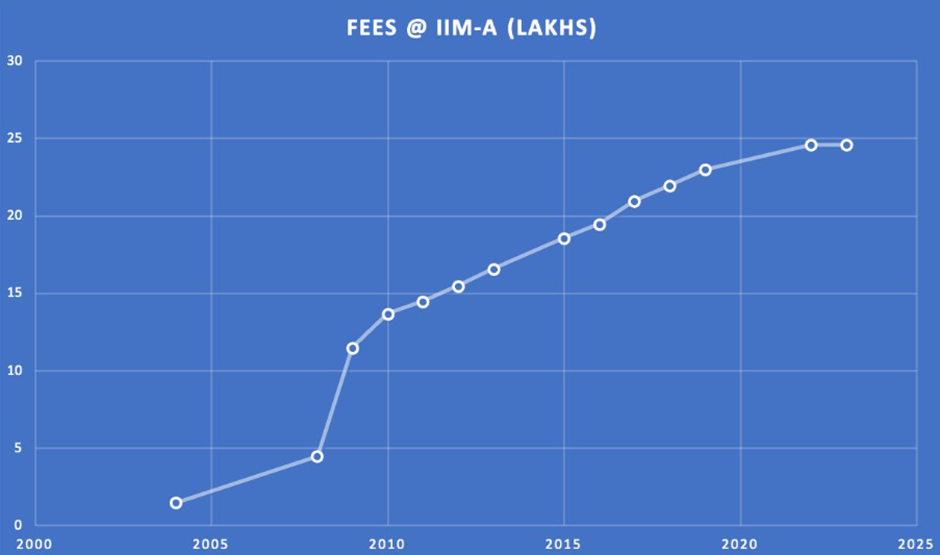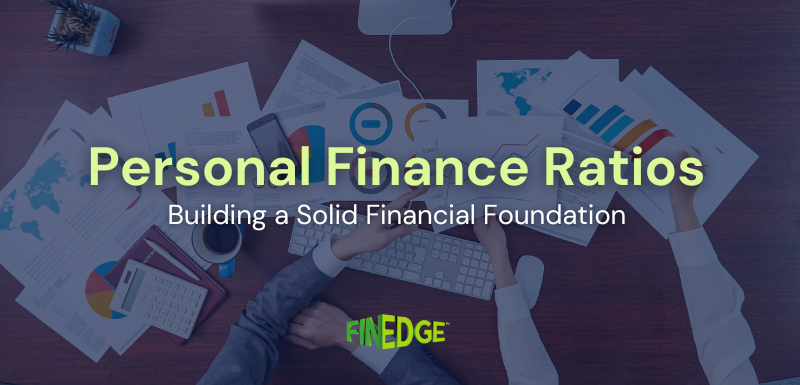Why Should You Plan for Your Child’s Higher Education?

It is August 2024, and by now, you must have paid the annual school fees for your child for the academic year 2024-25. You must have noticed that the school may have increased the fees compared to last year to counter the impact of inflation. The same holds true for your child's higher education. The cost of education will increase with every passing year, and by the time it is time for your child to take admission to college, the education cost will have increased substantially.
It is for this reason, as a parent, you should start investing for your child's higher education from now itself, if you are not already doing it. In this article, we will understand how the cost of education has risen, how it is expected to rise further due to inflation, and why, as a parent, you should plan for your child's higher education.
How Education Costs Have Increased Over the Years?
The two-year Post-graduate Program (PGP) course at IIM Ahmedabad is one of the most sought-after courses by MBA aspirants. Let us look at how the cost of education has increased over the years with the example of this course. As per the IIM Ahmedabad website, the fee for the program for the 2023-25 batch is Rs. 25 lakhs.
In the last 20 years, the fee for the program has increased from Rs. 1.5 lakhs to Rs. 25 lakhs, an increase of more than 16 times.
Chart: Increase in IIM-A PGP course fees in 20 years
The increase in the fees from Rs. 1.5 lakhs to Rs. 25 lakhs in 20 years has happened at a rate of 15.1% CAGR. However, we can observe that in the first few years (2004-2009), the rise in the course fees was rapid, then moderate increases over the next few years (2010-22), and it has been steady in the last couple of years.
Future Projections of Education Costs
You should consult an investment expert to understand the future projections of education costs and how to save for your child's college. They will arrive at the projected future education cost based on the average inflation in the last few years (5-10 years).
Most investment experts consider a 10% inflation rate for calculating future education costs. In the last decade or so, education costs have increased rapidly. Hence, going forward, the education expenses may increase at a lower rate than the assumed 10% rate. However, having more money is better than the problem of having less money than required. To arrive at the future projected cost of education, they will take into consideration:
- The current cost of the course that you would like your child to enroll for,
- The number of years post which the money is required, and
- The education average inflation rate
Once the investment expert arrives at the cost of future education, they can guide you on how to plan for child education. The goal plan will involve how much you should invest and where to build a higher education fund for your child.
Benefits of Starting Early With Education Fund Planning
In today’s competitive world, every parent understands the importance of education for children. Whether your child wants to run a business, take up a job, or become a self-employed professional when they grow up, good quality education can lay the foundation for it. Hence, as a parent, you should start early to build a higher education fund for your child.
When you start early, you have a longer investment time horizon. You can invest in equity mutual funds for financial goals with a longer investment time horizon. They have the potential to give you inflation-beating high returns and create wealth for you. The benefit of starting early is that you will have to invest a smaller amount compared to others who start late.
Strategies to Save for Education
One of the best strategies to save for your child’s higher education is through the systematic investment plan (SIP) route. A SIP helps you invest a specified amount every month for a specified duration in a specified mutual fund scheme. Regularly monthly investments through a SIP make you a disciplined investor.
As you invest regularly, you can review the higher education fund progress along with the investment expert, once every six to twelve months. During the review, the investment expert can analyse the performance of the mutual fund scheme(s). If any scheme(s) is consistently underperforming, they can be replaced with an appropriate mutual fund scheme(s).
The step-up SIP is a strategy to reach the child’s higher education goal faster. A step-up SIP allows you to increase the monthly investment amount annually. The increase in the SIP amount can be a percentage of the base SIP amount or an absolute amount. You can increase the SIP amount by 5-10% annually, which is in line with the annual income increase for most people.
To Be Prepared Is Half the Victory
As a parent, you should start planning for your child’s higher education as soon as possible, preferably from the time they are born. It gives you enough time to plan for it. During the goal-planning journey, if there are minor hiccups, you can take corrective action. On the way, if there are any changes in the plan, you can fine-tune your strategy. As a parent, one of the best gifts you can give your child is being ready with a higher education fund when they are ready to take admission to college. It will lay the foundation for their career.
FAQs
While Building the Higher Education Fund, What Costs Should You Consider?
If the college admission will be taken in the city of residence, you have to consider the course fee and associated costs. If the college is in another city, you have to consider additional costs like accommodation, food, travel, etc.
What if the Child Takes Admission for a Different Course Than Planned?
It is common for a child to have different career aspirations than what their parents have planned for. To avoid such situations, as your child is growing, have conversations about their aspirations and what they plan to do when they grow up. It will give you time to fine-tune your plan to match it with the child's. Finally, when the child is ready to take admission to college, if the plan has changed, you will still have a decent amount of money. You can arrange for the difference from your personal finances or an education loan.
How Do I Know the Fee for the Course for Which I Plan to Enroll My Child?
Suppose, you want your child to enroll for the IIM Ahmedabad 2-year PGP course. You can visit the IIM Ahmedabad website to check the fees for the current academic year for the PGP course. You can do some research on how the fee has increased for the course in the last 5-10 years. You can use that as the average inflation rate to calculate the future cost. You can apply the same logic for building a higher education fund for an engineering, medical, or any other course.
Your Investing Experts
Relevant Articles
Understanding the Financial Planning Pyramid: Building Your Finances the Right Way
Most people juggle several financial goals at once, an emergency fund, retirement planning, a child’s education, or even short-term lifestyle goals like travel. Without a proper framework, it becomes difficult to decide what to tackle first. The Financial Planning Pyramid offers a simple and effective way to bring structure to your financial life. It ensures that essential protections are in place before you start saving and investing for long-term wealth.
Personal Finance Ratios You Should Understand Before You Start Investing
Successful investing begins long before you pick funds or set return expectations. It starts with understanding your financial foundation, how much you earn, how much you spend, and how much is left to invest consistently. These simple but powerful personal finance ratios offer a clear view of your financial health and help you make informed, goal-aligned decisions.
Why Mutual Funds Are the Smartest Way to Build Your Child’s Marriage Fund
Indian weddings are beautiful but expensive affairs, and their costs are rising every year. Mutual fund SIPs can help you plan ahead, ensuring your child’s big day is celebrated without financial stress.



.png)